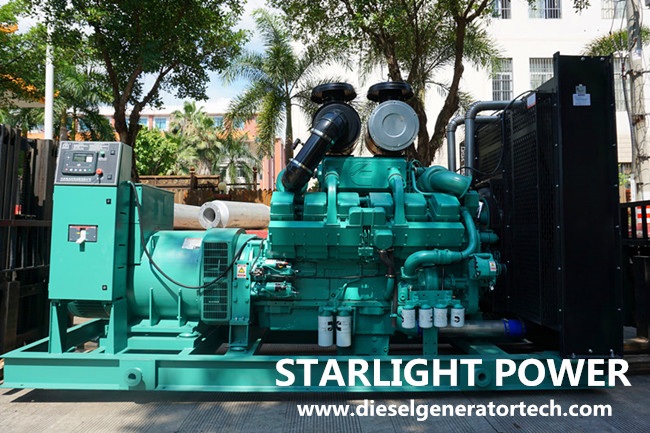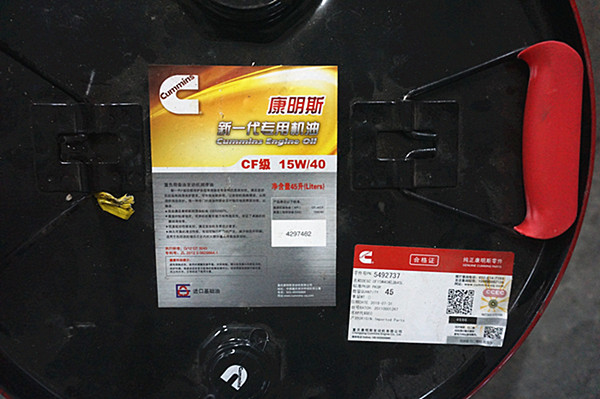Engine oil is generally used for lubrication, cooling, sealing, heat transfer and rust prevention. The surface of each moving part of the engine is covered with lubricating oil to form an oil film, avoiding the heat and wear of the parts.
Regular replacement of oil to ensure the stable operation of diesel generator set. Such maintenance can effectively extend the service life of the diesel genset. Therefore, in the process of using the diesel generating set, it is necessary to determine the replacement time of the genset accurately. How long does it take to replace the oil of the diesel generator?
The oil used by different diesel generator manufacturers and diesel generators of different power is different. In general, the new engine works for 50 hours for the first time and 50 hours after repair or overhaul. The oil replacement cycle is usually carried out at the same time as the oil filter (filter element). The general oil replacement cycle is 250 hours or one month. Using Class 2 oil, the oil can be replaced after 400 hours of work, but the oil filter (filter element) must be replaced.

The function of diesel generator engine oil
1. Sealing and leakproof: The oil can form a sealing ring between the piston ring and the piston to reduce gas leakage and prevent external pollutants from entering.
2. Anti-rust and anti-corrosion: Lubricating oil can suck on the surface of parts to prevent water, air, acidic substances and harmful gas from coming into contact with parts.
3. Lubrication and wear reduction: There is a rapid relative sliding between the piston and the cylinder, and between the main shaft and the bearing bush. To prevent excessive wear of the part, an oil film is required between the two sliding surfaces. An oil film of sufficient thickness separates the surface of the relatively sliding part to reduce wear.
4. Cleaning: Good oil can bring the carbide, sludge and wear metal particles on the engine parts back to the oil tank, and flush the dirt generated on the working surface of the parts through the flow of lubricating oil.
5. Cooling: The oil can bring heat back to the oil tank and then dissipate it into the air to help cool the tank.
6. Shock absorption and buffering: When the pressure in the engine cylinder port rises sharply, the load on the piston, piston chip, connecting rod and crankshaft bearing is suddenly increased. This load is transmitted through the bearing to lubricate, so that the impact load can be buffered.

For various reasons, when the oil is not replaced, the oil has gone bad. If the oil is deteriorated, it must be replaced. How to judge whether the lubricating oil has deteriorated?
Oil flow observation method. Take two measuring cups, one of which is filled with the lubricating oil to be inspected, the other is placed on the table, and the measuring cup filled with lubricating oil is lifted off the table 30-40 cm and tilted to let the lubricating oil to slowly flow to the empty cup, observe the flow, good quality lubricating oil flow should be slender, uniform, and continuous. If the oil flow is quick and slow, and sometimes there is a large flow, then the lubricant has deteriorated.
Illumination method. On a sunny day, lift up the the lubricating oil with a screwdriver at a 45-degree angle to the horizontal. Observe the oil droplets under sunlight. Under the light, it can be clearly seen that there is no wear debris in the lubricating oil, which can continue to work. If there is too much wear debris, the lubricant should be replaced.
Oil drop trace method. Take a clean white filter paper, and drop a few drops of oil on the filter paper. After the oil leaks, the good lubricant has no powder, and it is dry and smooth by hand, and it has yellow marks. If there is a black powder on the surface, and there is a feeling of resistance by hand touch, it means that there are many impurities in the lubricating oil, and new lubricating oil should be replaced.
Hand twist method. The lubricating oil is repeatedly ground between the thumb and index finger. The better lubricating oil hand feels lubricated, less wear debris, no friction. If you feel a large friction between fingers, it indicates that there are many impurities in the lubricating oil and can not be reused, should be replaced with the new lubricating oil.
What is the cause of engine oil deterioration? The five main reasons for the rapid deterioration of engine oil are as follows:
1. The oil grade is wrong and the quality is not up to standard. Generally, Cummins diesel generator with supercharged and rated speed greater than 2000r/min should use oil of class CC or above.
2. The technical condition of generator set is not good, gas channeling, oil channeling, the matching clearance is too large or the oil temperature is too high.
3. Generator set often runs at low temperature, low load and low speed, the piston deformation is not enough, and the combustion is not good. The diesel oil enters the oil sump along the cylinder wall to make the oil dilute and deteriorate.
4. The exhaust gas enters the oil sump and condenses into moisture and acidic substance, which deteriorates the oil.
5. The oil filter element is dirty, and the unfiltered dirty oil enters the lubrication part, which also accelerates the wear of the generating set parts.
Comments
Post a Comment